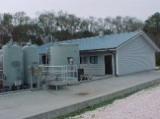Superfund: Operation and Maintenance and Long-Term Response Actions
Post construction completion (PCC) is the name commonly given to activities at Superfund remedial actions following remedy construction. PCC activities can be a critical component to help ensure that remedies are properly maintained and perform as intended to protect human health and the environment. Two important PCC activities, that help ensure remedies are properly maintained and perform as intended, are operation and maintenance (O&M) and long-term response action (LTRA).
Operation and Maintenance
O&M is an important component of a Superfund response, ensuring that the remedy continues to perform as intended and remains protective of human health and the environment. O&M activities may include remedy operation, maintenance and monitoring, as well as monitoring of impacted media and implemented ICs. Generally, O&M is the responsibility of potentially responsible parties (PRPs), states or other federal agencies. EPA is responsible for ensuring that the work is performed adequately. EPA also retains funding and operating responsibility for Fund-financed ground water restoration systems for up to 10 years prior to transferring these systems to the states for O&M, see description of LTRAs for more information.
Long-Term Response Actions
Activities during LTRA may include operation, maintenance and monitoring of the remedy, introduction of substrates into the subsurface, monitoring of affected groundwater or surface water, remedy optimization and planning for transfer of the remedy to the state for the O&M phase.
The National Contingency Plan (NCP), 40 CFR 300.435(f)(3), states: "For fund-financed remedial actions involving treatment or other measures to restore ground- or surface-water quality to a level that assures protection of human health and the environment, the operation of such treatment or other measures for a period of up to ten years after the remedy becomes operational and functional will be considered part of the remedial action."
The 10-year period between the “operational and functional” determination and the start of O&M is defined as an LTRA. “Operational and functional” is described in the NCP, 40 CFR 300.435(f)(2): "A remedy becomes 'operational and functional' either one year after construction is complete, or when the remedy is determined concurrently by EPA and the state to be functioning properly and is performing as designed, whichever is earlier. EPA may grant extensions to the one-year period, as appropriate."

